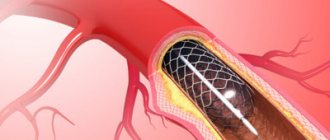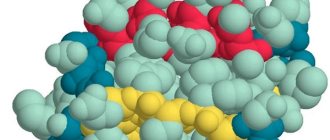Home / Cooking / Ingredients and products
Back
Published: 04/08/2019
Reading time: 5 min
8
6513
3.9 / 5 ( 15 votes)
It is rare to meet a person who has not heard of chicory. Instant chicory has recently become very popular. Its beneficial properties have already been well studied, but one should not forget about contraindications when using it. Even the most harmless plant can cause harm to the body if used incorrectly.
If you haven’t been able to try it yourself, then, probably, many have seen jars or bags in which it is located in stores. Externally, it can be like syrup, powder or granules similar to instant coffee.
Older people, as a rule, try to replace tea or coffee with this drink. It is also chosen by those who have chronic diseases (cardiovascular diseases, problems with the pancreas and intestines, etc.)
Photo: What chicory looks like in nature
Since soluble chicory is of plant origin, it brings both benefits and harm. There is a list of contraindications. Not all people are informed about them.
This article will talk about which category of people will benefit from chicory, how to use it wisely, and when the drink can harm the body.
- Description of the plant
- Beneficial properties of chicory, its composition and use in food
- Benefits of instant chicory
- What other properties does soluble chicory have?
- Contraindications and harm
- Which is better, powdered or chicory extract?
- Can pregnant women use instant chicory?
- The benefits of instant chicory for weight loss
- Instant chicory for children
- How to choose and where to buy a useful product
- How to brew and drink instant chicory correctly How to brew
- How to drink correctly
- A simple recipe for a chicory drink
Description of the plant
Chicory is a perennial. Where does it grow? Usually, the place where it grows is the tropics, where the climate is temperate. This asteraceous plant appeared on the Mediterranean coast, which became its homeland.
In addition to these places, the places where chicory grows are: Eurasia, Australia, New Zealand, and North America.
The grass crop has a powerful root system reaching a length of more than 10 meters.
The meter-long stem, which is deepened, has a distinctive feature. It bears short-petioled leaves. They can be round or tapered at the ends. The leaves are in rosettes.
Most often, chicory blooms in July. Flowers are male and female. According to the type of inflorescence, it is a basket, which is doubly fenced with a wrapper.
If the weather is sunny, the flowers will gradually open. If the weather is rainy, they may not open at all and remain closed. The achene is the fruit of chicory. It is formed by the beginning of the autumn period.
Wild chicory has more than 6 species. Where is he met? These are mainly: meadows, rural roadsides, forest edges.
A perennial plant that is cultivated and grown by gardeners, there are 2 types. The first is ordinary chicory. The second is salad. Their roots are used for cooking.
What does chicory look like?
Chicory, from which the root part is used, is originally a weed type of plant, although in the last century it has been actively cultivated for use in the food industry. Originally from the Mediterranean, chicory perfectly adapts to the excessive humidity of the middle zone without losing its healing properties. The most favorite places to grow are meadows, fields, roadsides and forest edges.
The height of the plant can reach one and a half meters, the stem is long, straight, rigid, with branches and abundant receptacles. Chicory leaves are small, oblong, pointed or rounded at the end, vaguely reminiscent of dandelion leaves. The plant belongs to the Asteraceae family, and chicory flowers are distinguished by an abundance of blue, blue, pink or purple, depending on the composition of the soil and climatic conditions of the petals, located around the circumference. The root, the most valuable commercial part of chicory, has a rod shape and can reach a considerable length.
Beneficial properties of chicory, its composition and use in food
The plant is considered to be a weed. However, its leaves and roots contain: a large number of chemical ingredients that provide benefits. There are vitamins and organic compounds. People know about this and try to use it for health purposes.
What does chicory powder contain:
- A substance called inulin (roots contain 40-45%). What is inulin? This is a sweet carbohydrate. It consists of polysaccharide residues and, like starch, functions as an additional carbohydrate in the body.
By the way, it is not digested by intestinal enzymes. It is for this reason that he introduces a group called dietary fiber.
Inulin is an excellent environment for a group of bacteria called “prebiotics”, whose habitat is the intestines. You can learn about what function prebiotics perform in the human body from the article, which talks about how prebiotics differ from probiotics.
Due to its sweet taste, it is used in the manufacture of products as a sweetener. For this reason, the drink can be consumed by diabetics.
- Squirrels. They are assigned structural and mechanical tasks. They must maintain the cell shape in the desired state and participate in the nutrition process.
Proteins must supply the body with all the important amino acids involved in the biosynthesis of its proteins, or be broken down into energy. That is why, after drinking the drink, a person feels more energetic. It is worth watching a video about the benefits of chicory and how it can harm.
The presence of intibin glycoside gives the drink a certain bitterness. The content of this substance in the plant helps accelerate oxidation processes. In the human body, this component helps the process of fat breakdown.
- The tannins present in chicory should reduce the inflammatory process. These components also have the property of viscosity.
- Chicory contains many types of acids. This includes milk, sorrel, and benzoin.
There is also malic acid. The task of acids of organic origin is to maintain pH balance in the body, have a positive effect on the functioning of the gastrointestinal tract, and reduce the risk of possible diseases.
Contains many vitamins of different groups:
- Thiamine ensures the heart functions “like a clock.” It also normalizes the functioning of the nervous and digestive systems;
- The strongest antioxidant that slows down cell aging and strengthens the immune system is carotene;
- Riboflavin maintains the normal condition of hair, nails, skin, and has a positive effect on the functioning of the reproductive system. Good for the thyroid gland.
- Vitamin C maintains muscle tone, strengthens blood vessels, and has a “+” effect on the immune system.
Video: benefits of instant chicory
Rules for preparation and consumption
source
The main objectives of patient rehabilitation after a heart attack and stenting are to restore the patient’s vital functions and reduce the risk of a recurrent attack. The success of rehabilitation measures is largely determined by the correctness of therapeutic nutrition. The diet for myocardial infarction is aimed at:
- normalization of cardiac muscle function and acceleration of reparative processes in the myocardium;
- reducing the load on the cardiovascular system and improving blood circulation in general;
- stabilization of body weight in the presence of obesity;
- normalization of motor function of the gastrointestinal tract.
The basic principles of nutrition for post-infarction patients are:
- reducing fat consumption (especially foods containing large quantities of saturated fatty acids);
- increasing the consumption of polyunsaturated fatty acids, which reduce blood lipid levels;
- restriction of free fluid;
- increased consumption of foods containing complex carbohydrates and fiber;
- limiting table salt to 3-5 g per day;
- reducing the proportion of foods rich in cholesterol in the diet.
Therapeutic nutrition after myocardial infarction is based on the dietary Table 10I and 10. The diet contains a physiologically normal amount of protein - 80-90 g (60% of animals), limited fat content - up to 70 g of fat (mainly animal) and 350-400 g carbohydrates (of which simple carbohydrates account for about 30 g), table salt consumption is no more than 3-5 g per day. The energy value of the diet is 2300-2400 kcal. The amount of free fluid is 1.2 l/day.
The diet is enriched with Vitamins A, C, D and water-soluble vitamins that improve metabolic processes in the myocardium, which is achieved by including in the diet the optimal amount of vegetable fat, fresh vegetables and fruits, some cereals (buckwheat, oatmeal), and some meat products (veal).
In order to normalize the electrolyte composition of extracellular/intracellular fluid, which is of great importance in disrupting myocardial metabolism, foods containing increased amounts of potassium are introduced into the diet. This is achieved by including diseased fruits and vegetables, juices and decoctions from them in the diet.
Other microelements (manganese, magnesium, potassium, iodine), necessary for the normal functioning of the heart muscle, are compensated by the presence in the diet of various products of plant and animal origin, in particular, various seafood (squid, mussels, shrimp, seaweed). To reduce the load on the cardiovascular system, Table 10I provides split 5-6 meals a day with the last meal 3 hours before bedtime.
All foods that have a stimulating effect (coffee, tea, chocolate, spices, cocoa) are excluded from the diet. The proportion of products containing dietary fiber (vegetables, cereals, fruits), consumed in the form of salads or independent dishes, is increasing. It is recommended to include different varieties of “white” fish in the diet, since unsaturated fatty acids from fish fats improve cholesterol metabolism.
Dietary nutrition after a heart attack for men and women is based on the stage of rehabilitation:
- Stage I - acute period (first week after a heart attack) - gentle food (steamed or boiled with puree), with the complete exclusion of table salt. Eating 6-7 times a day, in small portions. The total weight of the daily diet is 1700 g. The energy value of the diet is 1100-1300 kcal, containing proteins, fats and carbohydrates in quantities of 60, 30 and 180 g; free liquid - up to 0.8 liters. The menu may include: first courses with vegetable broth with pureed vegetables and cereals; steam cutlets, lean beef meatballs, pureed cottage cheese, egg white omelette, boiled lean white fish, crackers (up to 50 g), low-fat kefir; mashed boiled beets, carrots, or potatoes, oatmeal or buckwheat porridge, mashed with milk; liquid jelly, jelly, fruit drinks, rosehip decoction, infusion of dried apricots, prunes or raisins; weak tea with added milk, fruit juices diluted with water, carrot juices, alkaline still mineral water (still). All dishes should be warm; butter, refined and vegetable oil should be added only to ready-made dishes.
- Stage II - subacute period (2-3 weeks after a heart attack) - weight of the daily diet no more than 2000 g. Energy value 1600-1800 kcal containing proteins, fats and carbohydrates in the amount of 80:50 and 200 g. Free liquid at level 0 .8 l, salt content - no more than 3 g. Dishes are steamed, stewed or boiled. Dishes are served in crushed form, fractionally, up to 6 times a day. The menu may include vegetable broth soups with the addition of well-cooked cereals/vegetables, chopped boiled pieces of lean meat/fish, minced meat dishes, unsalted low-fat cheese, mashed potatoes, carrots, beets, curd and fruit puddings; baked apples, kefir, viscous unpoured porridge (buckwheat, semolina), crackers or dried wheat bread up to 150 g; cauliflower dishes, fruit and milk jelly, compotes and fruit drinks, raw soft fruits without coarse fiber, sugar up to 50 g, weak tea. Refined vegetable oil and butter (up to 5 g), milk is added only to ready-made dishes or sauces.
- Stage III - scarring period (week 4) - weight of the daily diet no more than 2300 g. Energy value 2100-2300 kcal containing proteins, fats and carbohydrates in the amount of 90:70 and 320 g. Food is boiled, stewed and served in pieces or chopped , 5 times a day. Free liquid at the level of 1 liter, the amount of table salt no more than 5 g/day. The menu may include crackers or dried wheat bread up to 150 g, first courses in a weak low-fat meat or vegetable broth, lean ham, boiled fish and boiled meat pasta with cottage cheese, ripe tomatoes, curd puddings with added fruits and cereals, stewed beets with carrots, butter - only in dishes (up to 10 g).
We suggest you read: How often can you take drotaverine?
A diet after a heart attack for a man/woman with “excess” weight involves reducing it in order to reduce physical stress on the myocardium and normalize lipid metabolism. This is achieved by carrying out fasting days in the form of:
- watermelon day 1500 g of ripe watermelon for 5 doses;
- rice-compote day (1 liter of compote and 100 g of rice porridge);
- 800 ml of fruit juice and 500 g of oatmeal per day;
- apple day (2 kg of baked or pureed apples per day).
The length of time spent at one or another stage of rehabilitation may be extended, especially after a major myocardial infarction, in the presence of complications. The diet after the scarring stage should correspond to Table No. 10 with a minimum content of fat and salt.
source
Benefits of instant chicory
Before going on sale, instant chicory must undergo serious processing. However, it will not lose its healing properties.
The product can be used by people with a variety of diseases, since soluble chicory contains many useful substances.
What effect does chicory have on the body? It helps normalize sleep, has a good effect on the functioning of the nervous system, and assists in the treatment of diseases of the circulatory system.
The kidneys and spleen will be “rejoiced” by chicory. If the intestinal microflora is disturbed, the drink will help restore it. For diabetics, this is an indispensable product, and also healthy.
According to experts, overweight people need to consume instant chicory. Here we must not forget that the drink can increase appetite. If a person knows how to cope with the feeling of hunger, he will be able to establish metabolic processes in the body, get rid of extra pounds and bad cholesterol.
Chicory, when dissolved, tastes like coffee. That is why it is considered an excellent substitute for this strong drink.
What is healthier: chicory or coffee?
What is better to drink: coffee or chicory? Comparison
Chicory is primarily considered as a coffee substitute. It is allowed for those who suffer from hypertension and diabetes, in this sense it is more beneficial. Coffee's main effect is tonic, it is a quick energy drink, and the drink from the rhizome has a whole range of positive properties, it has a gentle effect. If you need to wake up instantly, then coffee is better in this sense, but when consumed for a long time, the benefits of chicory are much greater due to dietary fiber, mineral salts, and vitamins.
As for reducing appetite and weight loss, both drinks are equivalent, they help burn calories and have a slight diuretic effect.
These products are completely different in taste and aroma. To gradually switch to chicory, it is beneficial to first partially replace coffee with it - drink their mixture. Also, we must not forget that in large quantities both cause harm.
Contraindications and harm
Chicory is a plant classified as medicinal. That is why it is important to do an analysis of your own health before consuming it.
If there are no diseases or other obstacles, then the drink can be introduced into your diet, because it is not only tasty, but also healthy. If you have illnesses, then you need to consult a doctor.
Yes, of course, chicory is useful. However, if a person has a duodenal ulcer, or a stomach ulcer, the drink can be harmful to health. People with gastritis should also treat this drink with caution.
Typically, soluble chicory has a good effect on the nervous system. If a person is prone to excitability, then it is better for him to give preference to another drink.
When fresh plant roots are processed into powder, a certain amount of beneficial substances is retained. They are a dilator for blood vessels. If a person has hemorrhoids, the drink may cause bleeding. People with this disease need to be careful.
If a person is prone to allergies, he should not get too carried away with this product. You can try drinking a little drink and wait for the reaction. If there is no allergy, then you can consume chicory (within reasonable limits).
Which chicory is better: instant, freeze-dried or liquid?
Uses of chicory in folk medicine
Here is an incomplete list of diseases and conditions for which traditional healers recommend using Petrov batog; its use will help with:
- hypertension - increased blood pressure;
- flatulence - an imbalance of microorganisms in the intestinal cavity and increased gas formation;
- gastritis - inflammatory processes in the gastric mucosa and duodenum;
- colitis and enteritis - nonspecific inflammatory processes in the small and large intestine;
- cholecystitis - inflammation of the walls of the gallbladder, but without the formation of stones;
- diabetes mellitus - impaired regulation of glucose levels due to pancreatopathy;
- kidney diseases - chronic and acute inflammation in the kidneys;
- anemia - or anemia of various origins;
- scurvy is a process of acute lack of vitamin C;
- insomnia, nervous disorders - increased nervous excitability and sleep disturbance due to stress;
- Migraine is a pathology of blood vessels in the brain.
Which is better, powdered or chicory extract?
It is believed that there is nothing better than chicory in powder form, and that which was obtained by roasting the roots. It is made when an extraction process is used.
In addition, it is necessary to obtain an extract of all components that have beneficial qualities into a liquid. This, in turn, becomes the basis for obtaining powder and extract.
An extract with viscous properties will be obtained after gentle evaporation has occurred. The temperature regime must be maintained from 60 to 100 degrees.
And dry powder, which dissolves, is obtained when spray drying is performed. The temperature should be 150 degrees.
Author:
womanss.ru
Still have questions? Ask them to the author in the comments!
auto RU
Which drink will taste better: instant chicory or liquid? The taste of liquid is different from instant, although the base is the same, and so are the benefits. It's just that the processing temperature of these two products is different. It should be taken into account that the lower the temperature, the higher the usefulness.
The most important thing is that there is no caffeine in the finished product. There is a list of diseases for the treatment and prevention of which doctors recommend drinking this drink.
Such diseases include: nervous exhaustion, stomatitis, bronchitis, asthma, diabetes, gastrointestinal diseases, anemia.
Chicory for skin and hair
Vitamins and minerals that enter the body through the consumption of drinks, syrups and extracts, as well as the use of skin creams, masks and balms containing chicory, help restore collagen fibers, improve the condition of the skin, improve hair structure and promote hair growth. It is possible not only to use industrially produced solutions and compositions, but also to make infusions from parts of the plant yourself.
Preparation of infusion: pour 30 grams of dry root and leaves of the plant with boiling water (800 ml), and keep on low heat for half an hour, then infuse in a sealed container or thermos for 6-8 hours. Strain the resulting infusion and use for external use.
Can pregnant women use instant chicory?
Of course, expectant mothers can (and should!) use instant chicory. It will benefit both mother and her baby. And most importantly, for those ladies who cannot imagine the morning without a cup of coffee, it will successfully replace it.
The beneficial effects of the drink on the functioning of the cardiovascular and hematopoietic system have been proven. Coffee, on the other hand, has the opposite effect.
Chicory has a calming effect on the nervous system and eliminates constipation. It fights heartburn and nausea well. It removes toxic substances from the body well, normalizes the functioning of the spleen, and helps absorb milk. But this product is so necessary for the expectant mother.
If you drink chicory, a pregnant woman will not have to worry about anemia. The drink contains additional vitamins, inulin, and organic acids. There will be no stagnation of urine and bile. The drink has a good effect on metabolism.
You can't do without contraindications. Since chicory tends to stimulate appetite, the expectant mother may gain excess weight.
To prevent this from happening, a pregnant woman should monitor the number of calories she consumes throughout the day. There is no need to overeat, but rather eat small portions.
If the expectant mother coughs, then she should not eat chicory. You need to choose a different drink, otherwise the cough will get worse.
If you have an ulcer of the duodenum, a stomach ulcer, or gastritis, you should avoid taking the drink orally. You should not give preference to chicory for those who have varicose veins or hemorrhoids. A drink from the root is contraindicated if you have an allergic reaction to chicory or plants that are similar to it.
Efficiency in diseases
Chicory is used as an auxiliary therapeutic and prophylactic agent, including for diseases of the cardiovascular system.
- Confirmed effectiveness in hypertension. With long-term use, the tone of the arteries and veins decreases, which leads to a general improvement in the condition. Excessive tension in the nervous system is relieved, fluid is more actively removed from the body, which also helps reduce the manifestations of hypertension.
- The beneficial effect on tachycardia is clearly expressed. The heart rate decreases, the severity of attacks is relieved. But in some cases, the opposite effect may occur due to excessive use of this drug.
- A beneficial effect on arrhythmia was noted. With regular use, the rhythm of heart contractions is evened out, and heart failure occurs less frequently. But is it possible to drink chicory alone for arrhythmia? No, because complex therapy is required to achieve lasting results.
The benefits of instant chicory for weight loss
It is impossible to say 100% that chicory is the best way to get rid of extra pounds. Inulin, which is part of the plant, absorbs toxic substances, increases the number of bifidobacteria, and normalizes stool.
Inulin passes through the digestive system, absorbs heavy metals, and removes them from the body. To make your figure slim, you need to change your diet, play sports, increase physical activity, and also consume chicory without sugar.
It is worth paying attention to the beneficial properties of chicory, and contraindications to its use, no matter what the purpose of taking this drink may be.
Chemical composition
Drinks from chicory come in different forms - it can be a ready-made granular or powdered product or homemade preparations at home. In any case, rhizomes are used for their production. It is the root of the plant that contains a large amount of inulin, a natural polysaccharide that is perfectly absorbed by the body, strengthens the immune system and regulates blood sugar in diabetes.
The plant contains many useful substances:
- beta-carotene is a powerful antioxidant that removes harmful substances from our body;
- vitamin E – improves immunity, reduces the risk of blood clots and helps maintain the youth of the body;
- thiamine – energizes, reduces the likelihood of neurological diseases;
- choline – cleanses the liver;
- ascorbic acid – helps resist colds;
- vitamin B5 – has a positive effect on skin condition;
- pyridoxine – helps with stress and fatigue, normalizes blood sugar levels;
- vitamin K – increases blood clotting and is required for the formation of bone tissue;
- retinol – helps improve vision, hair and teeth;
- folic acid – has a positive effect on the immune and cardiovascular systems.
Instant chicory for children
It turns out that this product is useful for children, not just adults. You can give it to a child who is 1 year old. That is why, in kindergartens and nurseries, soluble chicory is included in the menu.
The fact that the product is useful is evidenced by the following fact: chicory successfully cures diathesis in newborns. To obtain the desired effect, external application is advisable. A decoction of the roots should be added to the bath in which the child will be bathed. The second option is to make a compress and apply it to the baby’s skin.
Important! Like other products, soluble chicory is introduced into children's diets with caution. First you need to pour a very small amount of powder into heated milk. Then adults should monitor to ensure there are no allergies. In the event that there are no allergic reactions, gradually give the child 2 servings of the drink per day.
If the child is 3 or 4 years old, he can be given 1 tsp. powder per day. When the baby likes the drink, his parents offer him to drink chicory, cold. To improve the taste, it makes sense to add lemon (or other) juice and honey.
Is it possible to drink alcohol after a heart attack?
Chicory is not classified as a toxic plant unless there are contraindications; taking soluble chicory and adding syrups and extracts to drinks and dishes is not regulated by rules and regulations. However, the rich composition of active substances contained in properly processed chicory, with increased consumption, can lead to hypervitaminosis, irritation of the gastric mucosa, and allergies.
The average consumption rate is 3-4 glasses of drink per day, mainly after meals. It is recommended to mix chicory juice with vegetable juices before use, adding fats (cream, butter, etc.).
How to choose and where to buy a useful product
The most important thing at the time of purchase is to pay attention to the information written on the label. It must be stated that this product is made from natural chicory. It happens that manufacturers add powder from cereal crops.
If the product is of high quality, it is made entirely from the root. GOST R 55512-2013 must be written on the packaging label. The presence of a hologram is mandatory. Packages are sold in stores. Their cost starts from 80 rubles, and more.
The price depends on the brand, weight, packaging method, and how far the production site is from the capital. The cost of the product is also affected by the presence of useful natural additives. These are: sea buckthorn, hazelnut, blueberry, hawthorn, ginseng, rose hips, stevia.
The product has been developed to be used to make cold and hot drinks. You just need to pour it into boiling water. Since the product is highly hygroscopic, only use a dry spoon and store it only in airtight packaging.
It could be a well sealed jar. If any amount of moisture gets on the powder, it turns into stone. This means you only need to take it with a dry spoon.
Soluble chicory is a necessary and healthy product. If there are no contraindications, you can enjoy its wonderful taste!
Recovery after myocardial infarction: from attack to normal life
The site is dedicated to health and a healthy lifestyle without drugs
- Efficacy: therapeutic effect after 2-6 months
- Terms: 2-12 months
- Cost of products: 1800-1900 rubles. in Week
Modern patients are quite literate and in the vast majority of cases strive to cooperate with a doctor, this is especially true after suffering life-threatening conditions. Patients who take their health carelessly, after suffering a heart attack or stroke, often reconsider their lifestyle, diet, and eradicate some not very good habits in order to prevent the recurrence of acute cardiovascular pathology.
How to brew and drink instant chicory correctly
How to brew
There is no secret to brewing instant chicory. When preparing it for the first time, you do not need to add a large amount of powder to obtain a rich shade.
Despite all the beneficial properties, not all people manage to fall in love with the drink the first time. If you make a drink that is too strong, like coffee, you may not want to drink it anymore.
How to drink correctly
The drink has a characteristic astringency and bitterness. After drinking several cups, a person can determine for himself the right proportion to enjoy the taste of chicory.
As with drinking tea or coffee, the number of tablespoons of sugar you add will depend on personal preference.
If you want to use the drink to get rid of excess weight, then you don’t need to add sugar and honey. When, without sweet ingredients, you immediately feel disappointed in the taste, then you need to gradually reduce the amount of sugar. Then, exclude it altogether.
Features of self-harvesting plant parts
Instant chicory, proposed for the manufacture of a coffee substitute drink, is often made from overcooked raw materials, during the processing of which many of the beneficial properties of the plant are lost due to exposure to high temperatures. For self-harvesting, you can choose both the above-ground part of the plants and the roots. Both options have their own collection times and features.
The ground part is collected during abundant flowering, in dry weather: places are chosen away from highways, high-voltage transmission lines, and industrial production. The upper parts of the plant, about 30 cm, are harvested, without hard stems, old leaves with discoloration.
After harvesting, the raw materials are dried in a warm, ventilated room and stored in linen or paper containers, cardboard boxes, etc. To dig up the roots, plants with dead above-ground parts are selected; harvesting is done in early spring or late autumn, preferably after precipitation. Carefully digging, remove the rhizome, cut off the above-ground part.
Recipes for making a drink from instant chicory
A simple recipe for a chicory drink
This recipe is intended for those people who are too lazy to prepare complex culinary delights. You need to take a glass, pour one (or one and a half) teaspoon of powder into it.
Pour 200 ml of boiling water on top. The drink needs time to steep for better taste.
Chicory drink with ginger
For those people who have had a seizure or who want to lose weight, this recipe is suitable. Place a saucepan with 200 ml of water on the fire. As soon as the water boils, add 2 tsp. chicory.
Let it simmer for half a minute. Add a little dried ginger (or ground). Let it simmer for another 20 seconds. Turn off the heat. Let the drink brew for half an hour.
Chicory drink with rose hips
For those people who suffer from insomnia and irritability, this drink is suitable. It's easy to do. Pour 200 ml of water into the container. Boil. Add 1 tsp. chicory powder.
Let simmer for 40 seconds. Remove the container from the heat. Throw 4-6 rose hips into the liquid. Cover the container with the infusion with a towel. Let it brew for an hour. After this, the broth is filtered and consumed.
How to cook chicory with milk
There are 2 options for preparing this drink.
- Method No. 1. Pour milk into an enamel saucepan. For 250 ml of milk you need to add 1 tsp. chicory powder (if there is more milk, then, accordingly, more powder will be needed).
Boil. Let it brew for 5 minutes. Strain. All. You can drink.
- Method No. 2. The roots of the plant are brewed like tea. (for 250 ml of boiling water – 1 tsp of chicory roots or powder). Add boiled milk to your taste.
If desired, add sweeteners (honey, sugar, or sweetener).
What does chicory contain?
The root of the plant in its pure form is a supplier of carbohydrates and protein. However, its main value is not food at all. In its raw form, the root contains up to 11%, and in its dried form, up to 40% of inulin polysaccharide, which is used in the food industry as a natural sweetener and is an effective probiotic.
| Vitamins, mg | Microelements, mg |
| A (2.9) | Potassium (420) |
| K(3.0) | Phosphorus (45) |
| C (24) | Calcium (100) |
| V (1.1) | Sodium (48) |
| E (2.3) | Magnesium (30) |
| B1 (0.06) | Zinc (0.4) |
| B5 (1.2) | Manganese (0.42) |
| B6 (0.1) | Selenium (0.3) |
| B4 (13) | Copper (0.31) |
| B2 (0.1) | Iron (0.92) |
| PP (0.5) |
In addition to inulin and trace elements, chicory root is rich in tannins, resins, phenols, organic acids, coumarins and pectin.
How much instant chicory can you drink per day?
According to most experts, up to 5 grams of powder per day will be enough for a person. One cup of a not too strong drink will usually contain from 2 to 4 grams.
To date, there are no known cases of overdose in people who are allowed to consume chicory. Surely, nothing will happen from 2 or 3 cups of drink. You just don’t need to take this dose every day.
We must remember that chicory has a relaxing and calming effect. It is for this reason that it is advisable to drink it before bed, and not in the morning.
Soluble chicory lowers cholesterol levels and lowers blood pressure
Research shows that 10 grams of inulin per day (soluble chicory - 3 teaspoons) after 8 weeks lowered cholesterol and triglycerides, and also lowered blood pressure, as shown in the table to the left. The same data were obtained in animals. But high blood pressure (hypertension) greatly accelerates aging, causes vascular atherosclerosis, and affects the heart, kidneys and brain.
Links to studies:
- www.ncbi.nlm.nih.gov/pubmed/24688953
- www.ncbi.nlm.nih.gov/pubmed/26872721
- www.sciencedirect.com/science/article/pii/S0271531784800755
- www.ncbi.nlm.nih.gov/pubmed/25617533











